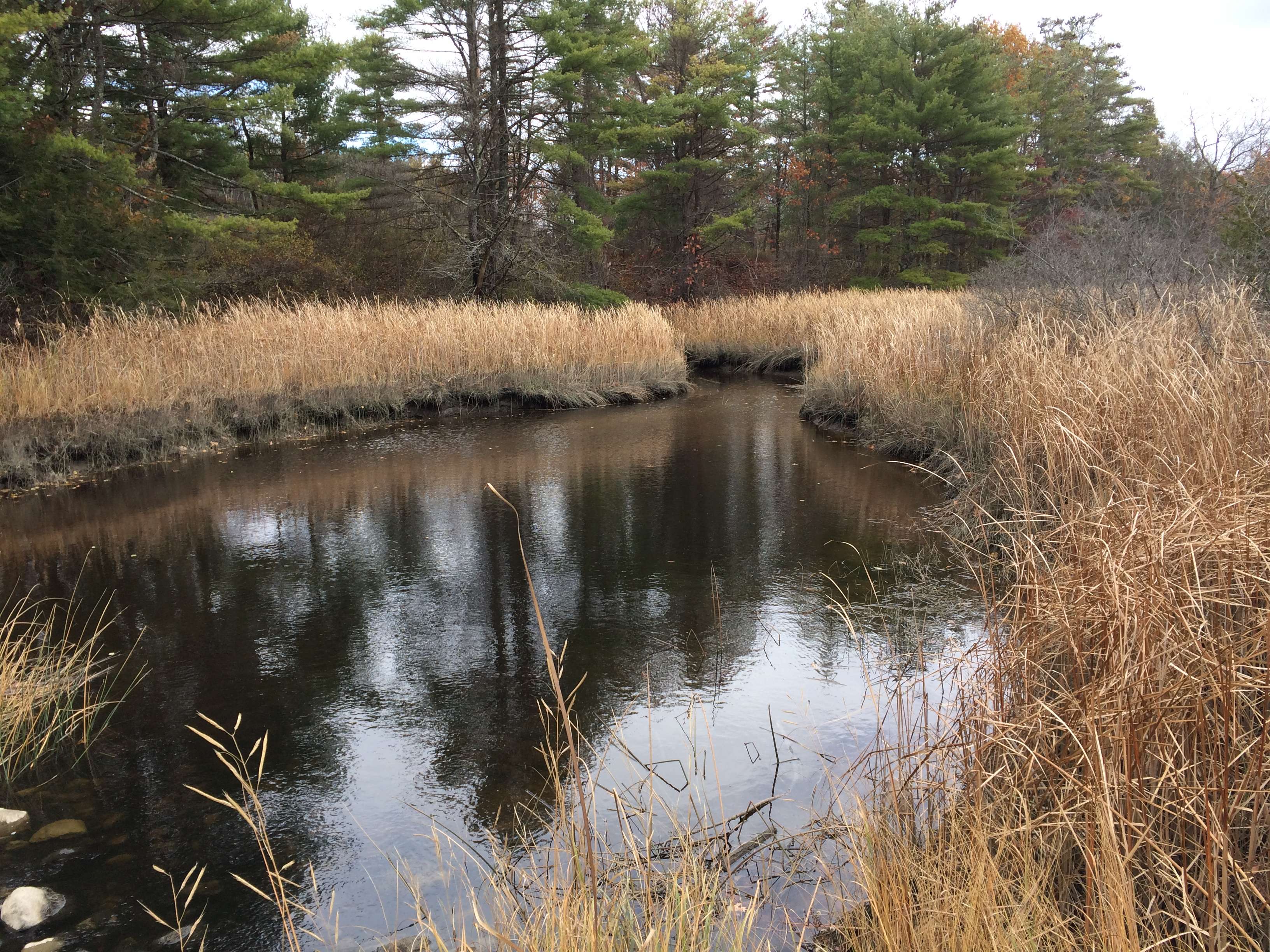
$1M gift to conservation group to fund marsh protection
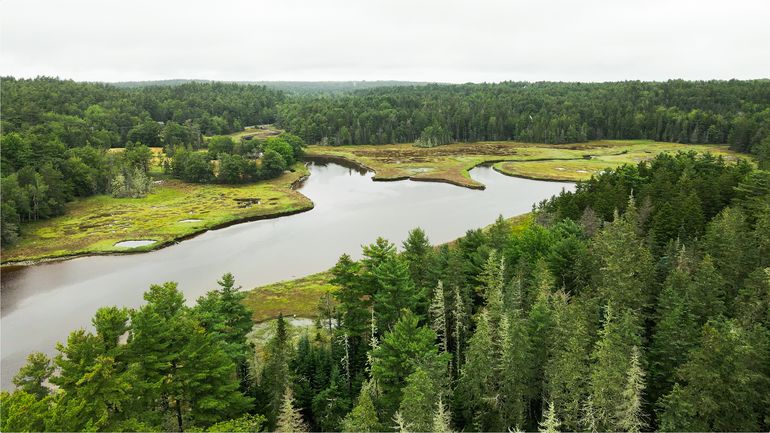 Courtesy / Maine Coast Heritage Trust
Maine Coast Heritage Trust has the option to purchase a conservation easement on 72 acres abutting its Babson Creek Preserve. The parcel includes 1,750 feet of frontage on Babson Creek, including saltmarsh and areas for marsh migration. The property will be used for outdoor education.
Courtesy / Maine Coast Heritage Trust
Maine Coast Heritage Trust has the option to purchase a conservation easement on 72 acres abutting its Babson Creek Preserve. The parcel includes 1,750 feet of frontage on Babson Creek, including saltmarsh and areas for marsh migration. The property will be used for outdoor education.
More Information
Maine Coast Heritage Trust, a statewide land conservation organization headquartered in Topsham, said Wednesday that it has received $950,000 from an anonymous donor to help fund the acquisition of ecologically significant marshes along the Maine coast.
The private gift is one of the largest of its type in Maine history, according to a news release.
The money will help conserve seven coastal marshes from the York River Marsh in southernmost Maine to Turner Stream Marsh in Cutler.

The funds augment a previous gift of $750,000 from the same donor that supported the recent acquisition and protection of the Cousins River Marsh, a three-way collaborative effort between MCHT, Royal River Conservation Trust and Freeport Conservation Trust.
The trust’s Marsh for Tomorrow Initiative aims to protect undeveloped upland around the state’s salt marshes.
The gift will make possible the acquisition and protection of 948 acres of saltmarsh and adjacent uplands on the coast of Maine; tidal marshes containing rare plant species; wetlands and habitat of significance for inland waterfowl and wading birds and lands near Acadia National Park. Marshes that were severely damaged by the intensive 19th-century agricultural practice of building embankments to increase the harvest of salt hay will also be restored.
The recent gift will fund two projects in York County, one in Kennebec County, one in Hancock County and three in Washington County. Acquisition and protection of all seven saltmarshes is expected to be completed by early 2023.
Window of opportunity
The trust, founded in 1970, launched in 2016 as a coastwide comprehensive marshland protection effort that includes conservation, restoration, stewardship and cross-organizational communication between research groups, local land trusts and conservation partners.
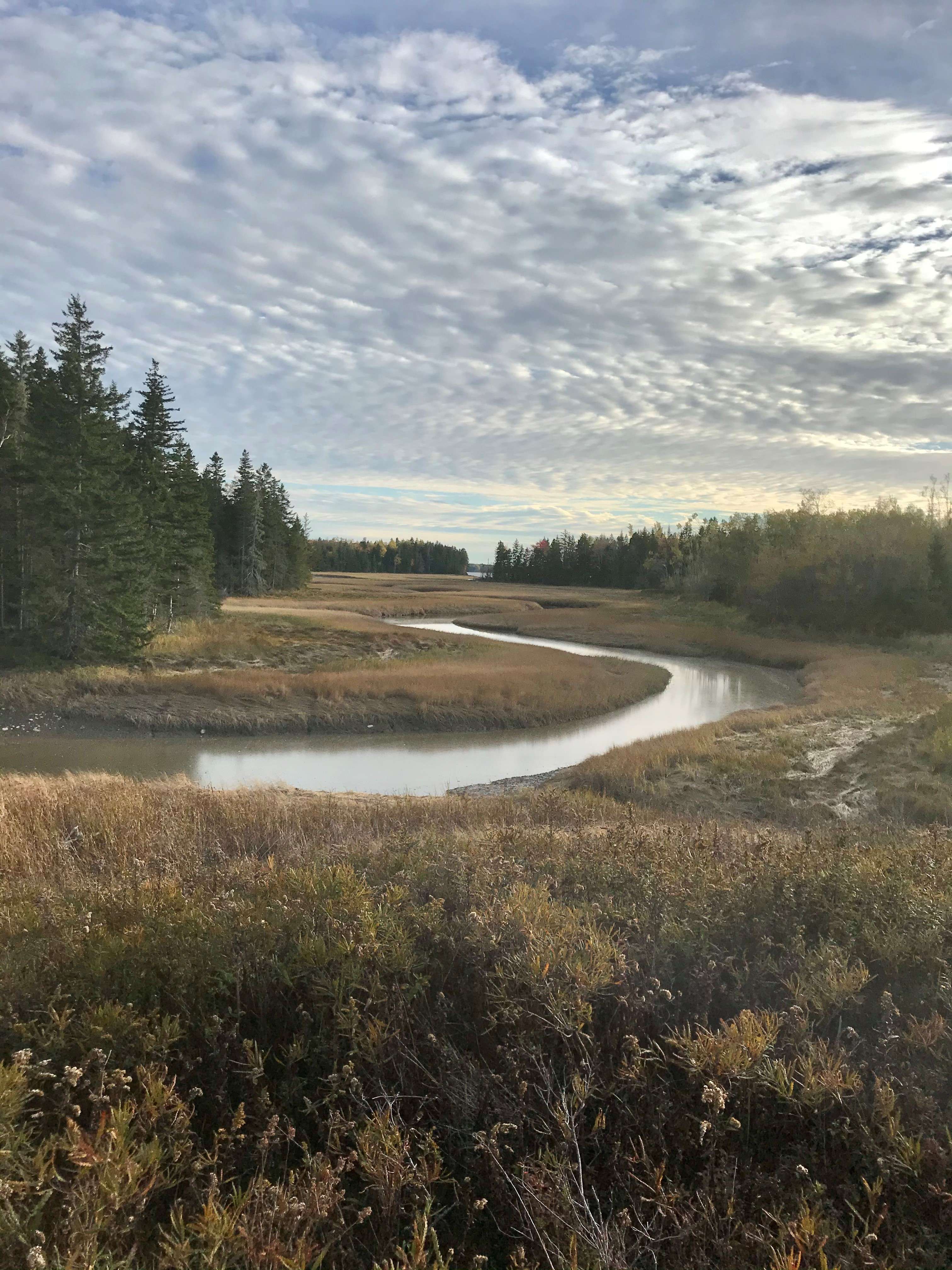
“The protection of saltmarshes and their adjacent uplands is critical to Maine’s coastal resilience as we adapt to climate change, rising sea levels and a new wave of powerful storm surges,” said the trust’s senior conservation and community planner, Jeremy Gabrielson. “As sea levels rise, MCHT is focused on protecting low-lying coastal lands adjacent to marshes because these vulnerable areas will experience the most severe flooding and they also have the greatest potential to support new saltmarsh habitat, a process known as marsh migration.”
Gabrielson continued: “With this gift, we now have a window of opportunity to protect threatened marshes and the land above them, providing an absorption zone for the incoming seas,” he said. “Funding of this kind is imperative because it allows us to streamline and hasten our efforts across multiple key projects and leverage other funding sources to get the work done.”
Migration pipeline
Gabrielson said the trust has another 27 active marsh migration projects in its pipeline, which is focused on 67 marshes along the Maine coast that need protection. Priority is being given to places with relatively intact habitat adjacent to marshes where land protection can protect plants and wildlife habitat, promote connectivity to nearby ecological systems, and support marsh migration.
At the same time, the trust is working with partners on other strategies to protect the safety of the infrastructure and the resilience of valuable coastal industries vulnerable to sea level rise.
Climate resilience
Kate Stookey, the trust’s president and CEO, said the significance and timing of the gift coincides with concerns that are escalating over climate change, rising seas, and the impact of storms on communities along the Maine coast.
“Unlike other states with highly built shorelines, Maine is in the fortunate position of still having marshlands to protect,” said Stookey, “but with the intensity of climate change and the relentless development pressure on parts of our coastline, our sense of urgency is amplified.”

In addition to improving the climate resiliency of coastal towns, Stookey said the protection of saltmarshes is a “blue carbon” strategy that provides a natural way to lock carbon in and prevent it from being released into the atmosphere.
The trust is able to leverage its coastwide focus and network of partnerships to advance blue carbon strategies associated with marshland.
“Through coastwide planning, analysis and collaboration, we can identify where land protection is most likely to safeguard existing marshes and provide them room to migrate as sea level rises,” she said.
Carbon storage
Key to implementing blue carbon strategies is a greater understanding of the carbon storage capacity in Maine’s tidal marshes.
A large body of research being undertaken by the Coastal Carbon Research Network has identified saltwater marshes and sea grasses among the top three “blue carbon” champions globally and noted that Maine marshes are roughly 10 times more effective at storing carbon on a per-acre basis than Maine forestland.
The trust cited an article published by the National Oceanic and Atmospheric Administration, which says that coastal habitat conservation is an “imperative” blue carbon strategy because when marshlands are damaged or destroyed, an enormous amount of carbon is emitted back into the atmosphere.
The Maine Climate Council Coastal and Marine Working Group’s “Blue Carbon Optimization Strategy” reports that when blue carbon ecosystems are degraded, flooded with freshwater, or drained, they can become sources of carbon dioxide and other greenhouse gasses, including methane.
A study of carbon cycling
Marsh and carbon studies have begun in Yarmouth and Hancock.
To increase its understanding of blue carbon systems in Maine, the trust is working with researchers, including Jon Woodruff from the University of Massachusetts Amherst and Northeast Climate Adaptation Science Center, said Beverly Johnson, a Bates College professor of earth and climate sciences.
Johnson and her students have been studying carbon cycling at the Cousins River fields and marsh in Yarmouth and Old Pond Preserve in Hancock.
Woodruff and his students have been working at the same locations to better understand the hydrology and sedimentation rates of marshes.
With funding from the Maine Natural Resource Conservation Program, a marsh restoration project has begun at Old Pond Preserve which aims to address impairment associated with historical agricultural alterations, such as dikes, berms, and ditches, that have changed the way water flows through the marsh, causing ponding on the marsh surface and loss of marsh vegetation.

“MCHT is using real-time research to inform restoration practices that have the potential to enhance carbon storage and restore vitality to Maine’s threatened saltmarshes,” noted Stookey. “In a quickly changing world, protecting these important marshland properties is a critically important first step.”
Seven marshlands
Slated for protection are:
- Kashmer Farm, Eliot, York County: MCHT will assist Maine Farmland Trust and Great Works Regional Land Trust with the acquisition of a conservation easement over 132 acres with 8,060 feet of frontage on the York River. Parcel includes existing saltmarsh as well as excellent areas for marsh migration. The closing is scheduled by the end of 2022 or early 2023.
- York River Marsh View, York, York County: A short distance from Kashmer Farm, this pre-acquisition for eventual transfer to the U.S. Fish and Wildlife Service will protect 51 acres with 6,800 feet of frontage on the York River and a main tributary. Half the property is saltmarsh, with adjacent upland for migration. 3.5 acres of the property, including a house, will be sold to help fund the project. The closing is scheduled by the end of 2022 or early 2023.
- Eastern River, Pittston, Kennebec County: MCHT is assisting Kennebec Land Trust with a 264-acre land donation directly across the river from KLT’s 50-acre Eastern River Preserve. There are approximately 33 acres of freshwater tidal marsh on and/or adjacent to the property. There are also at least three state-listed rare plant species on and/or directly adjacent to the property. There are 96 acres of wetland and a significant portion of inland waterfowl and wading bird habitat. Transfer of the property into conservation ownership is expected to occur before the end of 2022.
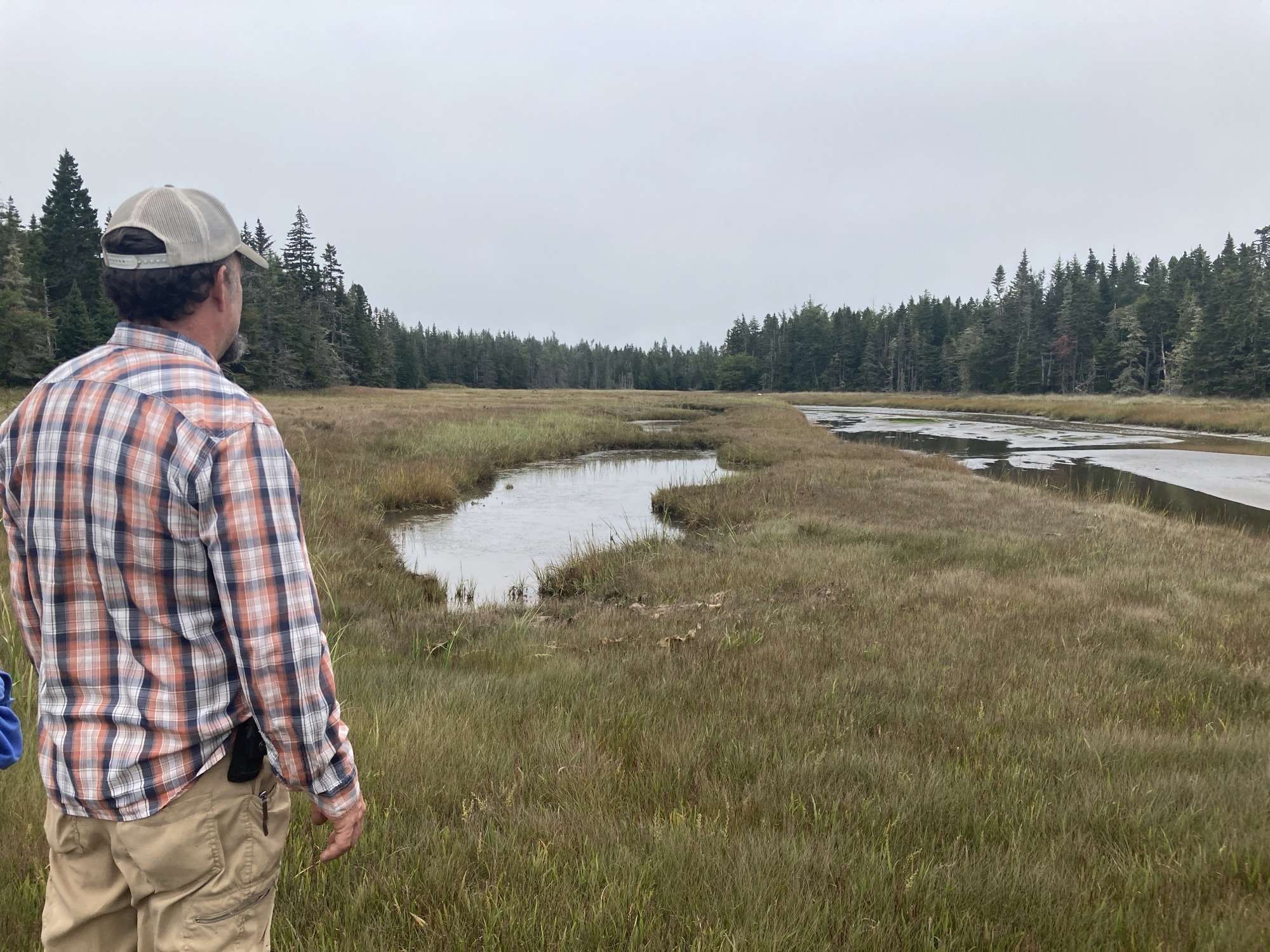
- Babson Creek Learning Forest, Bar Harbor, Hancock County: MCHT has the option to purchase a conservation easement on 72 acres abutting its Babson Creek Preserve. Parcel includes 1,750 feet of frontage on Babson Creek, including saltmarsh and areas for marsh migration. The project will link MCHT's Babson Creek Preserve, Kittredge Brook Forest Preserve and the conserved lands of Acadia National Park. The Community School will use the property for outdoor education.
- Flat Bay Marsh North, Harrington, Washington County: MCHT seeks to purchase 57 acres with 500 feet of saltmarsh adjacent to recently conserved parcels Curtis Creek North and Curtis Creek East Point. Additional funding for this project will come from a recently awarded grant from the federal North American Wetlands Conservation Act grant program.
- Curtis Creek Wetlands, Harrington, Washington County: A 72-acre fee donation adjacent to MCHT's existing 66-acre Curtis Creek East Point Preserve and Flat Bay Marsh North will create a 195-acre area of conserved priority marsh migration land. This property includes saltmarsh frontage on Curtis Creek.
- Turner Stream Marsh, Cutler, Washington County: 300 acres includes 18 acres of current marsh and lots of upland area suitable for marsh migration. Site is adjacent to the 12,234-acre Cutler Coast Public Reserved Land. The topography provides a good opportunity for saltmarsh study and long-term monitoring.







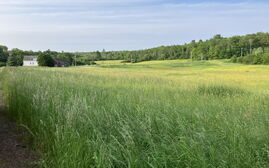






0 Comments